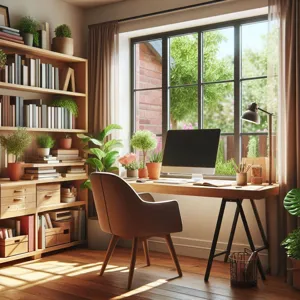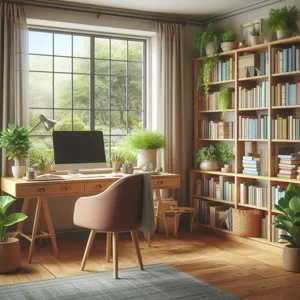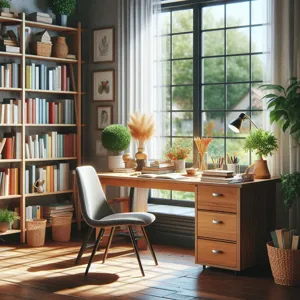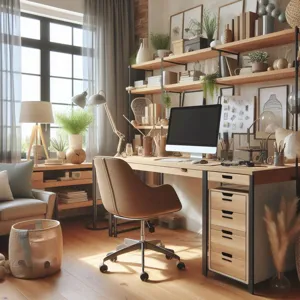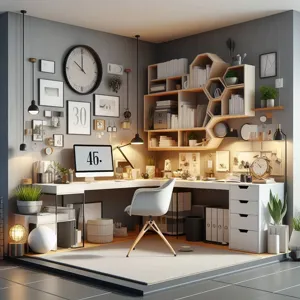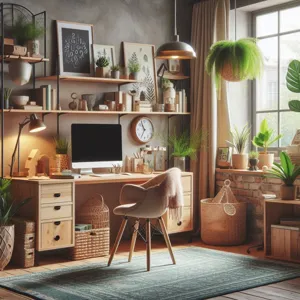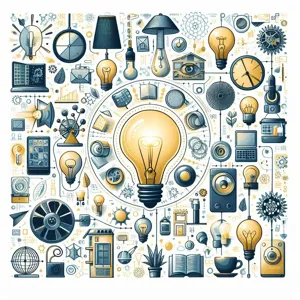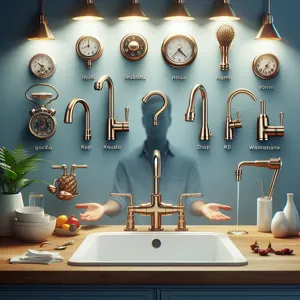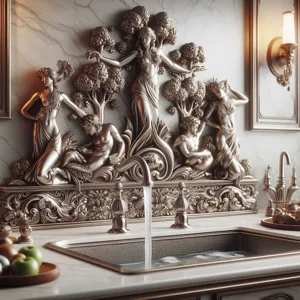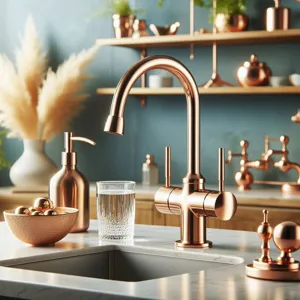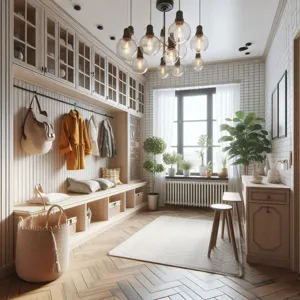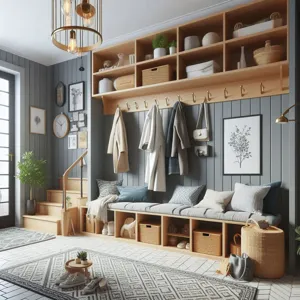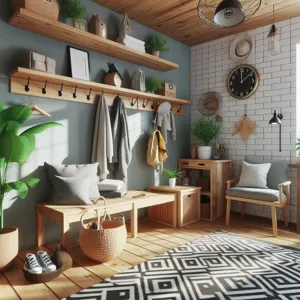Golf is often seen as a game of precision, patience, and practice, but what if you could sharpen your skills without ever stepping foot on the course? For avid golfers and newcomers alike, the challenges of busy schedules and limited access to driving ranges can be daunting.
Fortunately, with the right tools and techniques, you can transform your home into a personal golf practice haven. “Swing into Success: The Ultimate Guide to Practicing Golf at Home” will explore innovative ways to enhance your swing, improve your short game, and develop your putting skills, all from the comfort of your living room or backyard. Whether you’re looking to maintain your form during the off-season or simply want to refine your techniques, this comprehensive guide will equip you with practical tips, essential drills, and creative exercises to help you elevate your golf game to new heights. Get ready to swing into success and make every day a step closer to mastering your craft!
1. Introduction: The Benefits of Practicing Golf at Home

Practicing golf at home offers a myriad of benefits that can elevate your game without the need for a driving range or golf course. First and foremost, it provides the convenience of training at your own pace, allowing you to fit practice sessions into your busy schedule. Whether you have just 15 minutes between meetings or a full afternoon to dedicate, you can easily squeeze in valuable practice time without the hassle of travel.
Moreover, practicing at home fosters a relaxed atmosphere where you can focus on refining your skills without the pressure of others watching. This is particularly beneficial for beginners who may feel intimidated by the presence of more experienced players. In the comfort of your own space, you can experiment with different techniques, make mistakes, and learn at your own speed.
Another advantage is the ability to create a personalized practice environment tailored to your specific needs. With just a few essential tools, such as a putting mat, chipping net, and swing trainer, you can set up a mini-golf academy right in your living room or backyard. This customization allows you to concentrate on areas you want to improve, whether it’s your short game, putting, or overall swing mechanics.
Additionally, practicing golf at home can lead to significant cost savings. You’ll reduce the expenses associated with frequent trips to the course, range fees, and even lessons. Instead, you can invest in quality equipment or training aids that will support your development over time.
Lastly, home practice encourages consistency, an essential component of mastering any skill. By integrating golf practice into your daily routine, you’ll build muscle memory and develop a rhythm that translates to improved performance on the course. So, whether you’re a seasoned golfer looking to maintain your edge or a newcomer eager to learn the fundamentals, embracing the flexibility and benefits of practicing golf at home can be a game-changer in your journey to success on the fairways.
2. Setting Up Your Home Golf Practice Space
Creating a dedicated golf practice space at home can be a game-changer for improving your skills and maintaining your swing between rounds. Whether you have a spacious backyard, a cozy garage, or even just a small corner in your living room, you can transform any area into your personal golfing haven with a little creativity and the right tools.
**Choose the Right Location:** Start by identifying the best spot in your home where you can practice without interruption. Ideally, this space should have enough room for a full swing. If you have outdoor space, a backyard or patio can be perfect for setting up a driving range or a putting green. If you’re working indoors, look for a space with high ceilings and minimal breakable items nearby.
**Invest in Essential Equipment:** Depending on your available space, consider investing in some essential golf practice equipment. A high-quality putting mat can simulate the feel of a real green and can be easily rolled out in any room. For swing practice, a net or a hitting mat will allow you to work on your drives without the risk of shattering windows or damaging walls. Additionally, tools like alignment sticks and swing trainers can provide valuable feedback on your technique.
**Create a Comfortable Atmosphere:** To make your practice space inviting, ensure it’s well-lit and free from distractions. A comfortable mat or rug can be added for those longer practice sessions, and you might want to set up a small speaker to play your favorite music or a podcast to keep you entertained while you work on your swing.
**Incorporate technology:** If you’re serious about honing your skills, consider using technology to your advantage. There are various apps and devices available that can analyze your swing, track your progress, and offer personalized tips. Setting up a smartphone or tablet on a tripod can also allow you to film your swings, enabling you to review your form and make necessary adjustments.
**Personalize Your Space:** Finally, don’t forget to infuse your personality into your practice area. Hang up pictures of your favorite golfers, display trophies, or even put up motivational quotes that inspire you to improve. This personal touch will not only make your practice space more enjoyable but will also reinforce your commitment to becoming a better golfer.
By thoughtfully setting up your home golf practice space, you’ll create an environment that encourages consistent practice and fosters improvement, making it easier to swing into success on the course!
3. Essential Equipment for Home Golf Practice

When it comes to honing your golf skills from the comfort of your home, having the right equipment is paramount. Investing in essential gear not only enhances your practice sessions but also ensures you’re making the most out of your time spent away from the course. Here’s a rundown of the must-have items that can transform your living space into a mini-golf training ground.
**1. Golf Mat:** A high-quality golf mat is the foundation of any home practice setup. Look for a mat that mimics the feel of real grass, allowing you to practice your swings without worrying about the wear and tear on your lawn. Many mats come with alignment aids to help you hone your stance and aim.
**2. Indoor Putting Green:** A portable indoor putting green is a game-changer for refining your short game. These greens come in various sizes and often feature contours and breaks to simulate real-life putting conditions. With regular practice on a putting green, you can develop a better feel for distance and accuracy, all from the comfort of your living room.
**3. Swing Trainer:** To improve your swing mechanics, consider a swing trainer. These devices can help you practice your swing path, tempo, and follow-through. Some trainers even provide instant feedback, allowing you to make adjustments in real-time and develop a more consistent swing.
**4. Alignment Sticks:** Alignment sticks are invaluable tools for improving your stance and alignment. Placing these sticks on the ground can help you visualize your target line and ensure that your body is properly aligned during practice. They are lightweight, portable, and can be easily stored when not in use.
**5. Training Aids:** There are a variety of training aids available, from weighted clubs that help build strength and control, to devices that help with grip and wrist positioning. These aids can be particularly beneficial for addressing specific areas of improvement in your game.
**6. Golf Balls:** While it may seem obvious, having a supply of golf balls is essential for practicing your shots effectively. Consider investing in practice balls that are designed for indoor use, as they are often softer and less likely to cause damage to your home.
**7. Video Recording Device:** Capturing your swing on video can provide invaluable insights into your technique. Use your smartphone or a dedicated camera to record your practice sessions, then analyze your performance to identify areas for improvement.
By equipping yourself with these essential items, you can create an effective home practice environment that will help you swing into success on the golf course. Whether you’re refining your swing, perfecting your putting, or simply enjoying a few swings in your backyard, the right equipment can elevate your game and keep your skills sharp.
4. Swing Fundamentals: Key Techniques to Focus On
When it comes to mastering the art of golf, solidifying your swing fundamentals is essential, even if you’re practicing at home. Focusing on key techniques helps to build muscle memory and consistency, both crucial for improving your game. Here are some vital aspects to pay attention to as you work on your swing:
**Grip**: Your grip is the foundation of your swing. Ensure that your hands are positioned correctly on the club, with the grip resting snugly in the fingers rather than the palms. A neutral grip allows for better control and alignment, so take the time to experiment with your grip until you find what feels comfortable and effective.
**Stance**: A proper stance sets up the entire swing. Stand with your feet shoulder-width apart, knees slightly bent, and weight distributed evenly. Your posture should be athletic, with a slight bend at the hips and your back straight. Practice addressing the ball in this position, ensuring that your alignment is directed towards your target.
**Backswing**: The backswing is where the magic begins. Focus on rotating your shoulders and hips away from the target while keeping your arms relaxed. A common mistake is to overextend the arms, which can lead to an inconsistent swing. Instead, allow your arms to follow the natural motion of your torso as you complete your backswing. Consider using a mirror to check your form, ensuring your club is parallel to the ground at the top of your swing.
**Downswing**: Transitioning from your backswing to your downswing is where precision matters. Start the downswing by shifting your weight from your back foot to your front foot, allowing your hips to lead the motion. This weight transfer generates power and sets the stage for a more effective strike on the ball. Keep your eyes on the ball and maintain your focus as you bring the club down.
**Follow-Through**: Don’t underestimate the importance of a proper follow-through. A complete follow-through not only indicates a well-executed swing but also helps maintain balance. Make sure your body rotates fully towards the target, and finish with your weight on your front foot. This will ensure that your swing is not only powerful but also controlled.
By honing in on these swing fundamentals at home, you’ll be well on your way to developing a reliable and effective golf swing. Regular practice focusing on these key techniques will pay off when you finally hit the course, allowing you to swing into success with confidence!
5. Drills for Improving Your Swing Mechanics

When it comes to honing your golf swing, the mechanics are everything. Even if you’re practicing at home, there are a variety of drills you can incorporate into your routine that will help you develop a more consistent and powerful swing. Here are a few effective drills to get you started:
**1. The Half-Swing Drill:** This drill focuses on your follow-through and ensures that you maintain balance and control. Stand in your golf stance but only take your swing back to waist height. As you swing through, concentrate on making a smooth motion and finishing with your body facing the target. This helps reinforce proper body rotation and weight transfer without the complexity of a full swing.
**2. The Door Frame Drill:** To improve your swing path and prevent slicing, find a door frame or a wall corner in your home. Stand with your back to the frame, and take your backswing while ensuring your club doesn’t hit the wall. This drill encourages you to swing on the correct path, promoting an inside-out swing that can lead to better ball striking.
**3. The Alignment Stick Drill:** If you have alignment sticks or even a couple of broom handles, use them to ensure your stance and swing path are aligned properly. place one stick on the ground pointing towards your target and another vertically in front of you, aligned with your feet. Practice your swing while focusing on keeping the club on the correct path, ensuring your body aligns with both sticks. This visual aid can significantly enhance your understanding of proper alignment and swing mechanics.
**4. The One-Handed Swing Drill:** Strengthening your grip and improving your control can be achieved through one-handed swings. Practice swinging with your dominant hand only, then switch to your non-dominant hand. This drill not only builds strength and coordination but also helps you identify any imbalances in your swing that you may need to address.
**5. Mirror Work:** If you have a full-length mirror at home, use it to observe your swing mechanics. Watching yourself swing allows you to self-correct and understand the positions of your body throughout the swing. Pay attention to your grip, posture, and follow-through, making adjustments as needed.
By incorporating these drills into your at-home practice sessions, you’ll develop a deeper understanding of your mechanics, allowing you to refine your swing and enhance your overall game. Remember, consistency is key—dedicate regular time to these practices, and you’ll be on your way to swinging into success on the course!
6. Putting Practice: Tips for a Better Short Game
When it comes to honing your golf skills, putting is often the most underrated aspect of the game, yet it can make all the difference in lowering your score. Mastering your short game requires patience and precision, and practicing at home can be both fun and rewarding. Here are some tips to help you elevate your putting game without ever leaving your living room.
**Create a Dedicated Practice Space:** First things first, carve out a little corner of your home as your putting haven. Whether it’s a section of your basement, a spare room, or even your backyard, having a designated area helps you focus. Invest in a quality putting mat that simulates the feel of real greens. This will not only give you a consistent surface to practice on but will also help you develop a sense of distance and speed.
**Set Up Targets:** Just like on the course, aim for specific targets while you practice. Use cups, cones, or even plastic cups placed at varying distances to challenge yourself. This will enhance your targeting skills and help you learn to adjust your putts based on distance and break. To increase the difficulty, try to hit your target from different angles or with different slopes.
**Practice Your Grip and Stance:** Consistency is key in putting. Focus on your grip and stance; they should feel comfortable and natural. Stand with your feet shoulder-width apart, and keep your eyes directly over the ball. Make sure your grip is light—too much tension can lead to inconsistent strokes. Spend time in front of a mirror to ensure your posture is optimal, allowing you to strike the ball cleanly.
**Use Alignment Aids:** To improve your aim, consider utilizing alignment aids. These can be as simple as laying down a piece of string or a straight edge that connects your ball to the target. This visual cue will help you see any misalignment in your stance or stroke, allowing for quick adjustments.
**Practice Drills:** Incorporate specific drills into your routine. One effective drill is the “Gate Drill,” where you set up two tees just wider than your putter’s head. Try to roll the ball through the “gate” without hitting the tees. This exercise encourages a straight back-and-through stroke and helps build muscle memory.
**Track Your Progress:** Keep a journal of your putting sessions. Note the drills you performed, the distances you practiced, and your successes and challenges. Tracking your progress not only provides motivation but also helps identify areas where you need improvement.
By integrating these tips into your home practice routine, you’ll develop a more reliable short game and gain the confidence to sink those crucial putts when it matters most. Remember, the key to becoming a better putter lies in consistent practice and a focused mindset. So, grab your putter, set up your home practice area, and swing your way to success on the greens!
7. Chipping Techniques: Mastering the Around-the-Green Game

When it comes to golf, mastering your chipping technique can make all the difference in lowering your score and boosting your confidence on the course. Chipping is often the unsung hero of golf, but it can be the key to saving strokes around the green. Practicing chipping at home not only sharpens your skills but also helps you feel more prepared when you step onto the course.
Start by creating a dedicated chipping area in your backyard or even in your living room if space permits. Use a mat or an old blanket to simulate the feel of grass, and set up targets at varying distances. You might use buckets, hula hoops, or even just a towel laid out flat to create your target zones. The goal here is to replicate the conditions you might find on a golf course, so make it as realistic as possible.
Once you have your setup ready, focus on your grip and stance. A proper grip will give you more control over the club, while a stable stance will enhance your balance and precision. Experiment with different clubs, starting with a pitching wedge and then transitioning to a sand wedge or even a 9-iron. each club will produce a different trajectory and roll, which is essential to understand for various chipping situations.
As you begin to chip, pay attention to your swing mechanics. The idea is to maintain a smooth, controlled motion rather than trying to hit the ball hard. Use your shoulders to initiate the swing while keeping your wrists firm. Practice different shot types—high chips that land softly and roll out, as well as low, running chips that travel further. This variation will prepare you for the unpredictable nature of real-life chipping scenarios.
To track your progress, challenge yourself! Set goals for your practice sessions, such as aiming to hit a certain number of chips within a designated area or achieving a specific success rate. Engaging in friendly competitions with family members or friends can also make practice more enjoyable and rewarding.
Ultimately, the key to mastering your chipping game is repetition and focus. The more time you dedicate to practicing these techniques, the more confident you’ll feel when faced with tricky shots around the green. So grab your clubs, set up your practice area, and swing into success—your improved chipping skills will undoubtedly pay off when you hit the course!
8. Utilizing Technology: Apps and Devices for Golf Improvement
In the age of technology, enhancing your golf skills from the comfort of your home has never been easier. With a plethora of apps and devices tailored specifically for golfers, you can transform your living room or backyard into a personal training ground. These tools not only provide instant feedback but also make practice more engaging and effective.
First, let’s talk about golf swing analysis apps. Programs like **Golfshot** and **SwingU** allow you to record your swings using your smartphone, analyze your form, and track your progress over time. These apps often use sophisticated algorithms to break down your technique, offering tips to correct flaws and improve your performance. Many even feature tutorials from professional coaches, giving you access to expert advice right at your fingertips.
Another invaluable resource is swing analyzers, such as the **Zepp Golf 2** or **Blast Motion Golf** sensor. These compact devices attach to your glove or club and measure various metrics, including swing speed, angle, and tempo. The data collected is synchronized with your mobile app, providing insights that can help you refine your technique. Imagine being able to see your swing metrics in real-time and adjust accordingly—this kind of feedback loop is crucial for improvement.
Don’t overlook the power of virtual reality (VR) either. Programs like **Golf+** immerse you in stunning golf courses from around the world, allowing you to practice your swing as if you were on the green. This innovative technology not only makes practice more enjoyable but also helps with muscle memory, as the immersive experience mimics actual play.
Lastly, consider using fitness tracking devices or smartwatches to monitor your physical fitness, which is a crucial component of golfing success. Keeping track of your workouts, steps, and heart rate can help you stay in shape and improve your endurance on the course. Some advanced devices even offer specific workouts tailored to enhance your golf game, focusing on flexibility and strength in the muscles most used during a swing.
By leveraging these technologies, you can create a comprehensive training program that fits into your lifestyle. Whether you’re analyzing your swing, immersing yourself in a virtual course, or tracking your fitness progress, technology makes it easier than ever to hone your skills and swing into success, all from the comfort of your home.
9. Creating a Practice Routine: How to Stay Consistent
Creating a practice routine is the cornerstone of improvement in any sport, and golf is no exception. To truly swing into success, you need a structured approach that not only fits into your lifestyle but also keeps you motivated and engaged.
Start by setting specific, measurable goals. Perhaps you want to improve your putting accuracy or work on your swing mechanics. Whatever it is, having clear objectives helps you focus your practice sessions and gives you a sense of achievement as you progress. Break these goals down into manageable tasks, like dedicating 10 minutes to putting drills or 20 minutes to swing exercises each day.
Next, carve out dedicated practice time in your schedule. Consistency is key, so choose a time that works best for you—whether it’s early morning before work or a relaxing evening session after dinner. Treat this time as an important appointment; it will reinforce the habit and make it easier to stick to your routine.
Incorporate a variety of drills to keep things fresh and exciting. Mix short game practice with full swings and flexibility exercises to avoid monotony and develop all aspects of your game. You might also consider using training aids or golf simulators to enhance your experience and provide immediate feedback on your performance.
Additionally, track your progress. Use a practice journal or a golf app to log your sessions, noting improvements and areas that need more attention. This not only helps you stay accountable but also allows you to celebrate small victories along the way.
Lastly, don’t forget to make it social. Invite a friend or family member to join your practice sessions. Having a partner not only adds an element of fun but also creates a support system that can encourage you to maintain your practice routine.
By establishing a consistent practice routine, you’ll develop the skills and confidence needed to take your game to the next level—all from the comfort of your own home. So grab your clubs, set those goals, and swing into a successful golf journey!
10. Mental Game: Visualization and Mindfulness Techniques
When it comes to mastering golf, the mental game is just as crucial as your physical skills. Visualization and mindfulness techniques can elevate your practice sessions at home and help you develop a winning mindset that translates onto the course.
**Visualization** involves creating a mental image of your ideal golf swing, a successful putt, or even the entire game. Close your eyes and picture yourself on the course, standing over the ball with confidence. Imagine the feel of your grip, the sound of the club striking the ball, and the perfect trajectory as it soars toward the target. By vividly visualizing these scenarios, you train your brain to recognize success, allowing it to become a part of your muscle memory. This technique not only boosts your confidence but also prepares you mentally for real-game situations.
**Mindfulness**, on the other hand, helps you stay grounded and focused, especially during those moments of pressure. Practice being present in the moment, whether it’s while you’re swinging in your backyard or during a meditation session. Take deep breaths, clear your mind of distractions, and concentrate fully on your technique or even the rhythm of your practice. This can help you manage anxiety and maintain composure when facing challenging shots on the course.
Incorporating these mental techniques into your golf routine can lead to significant improvements in your performance. Consider setting aside a few minutes each day to engage in visualization exercises or mindfulness meditation. As you cultivate a strong mental game, you’ll find yourself not only swinging the club better but also enjoying the game more fully. With these powerful tools at your disposal, you’re well on your way to swinging into success.
11. Incorporating Fitness: Exercises to Improve Your Golf Game
Incorporating fitness into your golf practice routine is a game-changer that can significantly enhance your performance on the course. Golf may seem like a leisurely sport, but it demands a unique blend of strength, flexibility, and endurance. By integrating specific exercises into your at-home training regimen, you can build the physical foundation necessary to swing with power and precision.
Start with core-strengthening exercises, as a strong core is crucial for maintaining balance and stability throughout your swing. Planks, Russian twists, and medicine ball rotations can help you develop a robust midsection, allowing for more powerful turns during your backswing. Don’t overlook your legs either—squats and lunges not only build strength but also improve your stability, which is essential for a consistent swing.
Flexibility is another key component of a successful golf game. Incorporating stretching routines focused on your shoulders, hips, and back can enhance your range of motion, allowing for a smoother, more effective swing. Yoga or Pilates can be particularly beneficial, helping to improve both flexibility and mental focus.
Lastly, don’t forget cardiovascular fitness. While golf is not an intense cardio workout, having good endurance will help you stay energized throughout your rounds, especially during those long tournaments. Whether it’s a brisk walk, cycling, or jumping rope, aim for at least 30 minutes of aerobic exercise a few times a week.
By dedicating time to these fitness components, you’ll not only improve your golf game but also enjoy the added benefits of increased overall health and well-being. So, grab your workout gear and get ready to swing into success—your body will thank you, and your game will too!
12. Tracking Your Progress: Keeping a Practice Journal
Tracking Your Progress: Keeping a Practice Journal
One of the most effective ways to enhance your golf practice at home is by keeping a detailed practice journal. This simple yet powerful tool allows you to monitor your progress, identify patterns, and set achievable goals, ultimately propelling you toward success on the course.
Start by dedicating a notebook or a digital document specifically for your golf practice. Each entry should include the date, duration of practice, and specific drills or exercises you worked on. For instance, note the number of putts made from different distances, the accuracy of your drives, or the consistency of your swing. This will not only help you recognize areas that need improvement but also celebrate the milestones you achieve along the way, no matter how small.
Incorporate reflections into your entries. After each practice session, jot down your thoughts on what went well and what didn’t. Did you struggle with your short game? Did a particular drill feel especially rewarding? These insights will help you adjust your practice routine to focus on weaknesses, ensuring that you are always progressing in the right direction.
Additionally, set short-term and long-term goals within your journal. Short-term goals might include increasing the number of successful putts in a session or improving your swing speed, while long-term goals could involve lowering your handicap or mastering a specific technique. By breaking your larger aspirations into manageable steps, you can track your journey and stay motivated as you see your skills evolve.
Finally, don’t forget to review your journal regularly. Reflecting on your past entries will provide valuable context for your progress and help you stay accountable to the goals you’ve set. It’s a rewarding process that allows you to visualize your growth as a golfer, making each practice session feel purposeful and productive.
By maintaining a practice journal, you’re not just logging hours; you’re building a roadmap to success that will guide you through your golf journey, ensuring that every swing at home leads you closer to your goals on the course.
13. Finding Online Resources: Videos, Tutorials, and Communities
In the digital age, access to a wealth of golfing knowledge is just a click away. Finding online resources—such as videos, tutorials, and communities—can significantly enhance your practice sessions at home and elevate your game to new heights.
YouTube, for instance, is a treasure trove of golf content. From swing analysis to putting drills, there are countless channels dedicated to teaching various aspects of the game. Look for videos by renowned golf instructors or professional players who break down techniques and provide tips that cater to all skill levels. Watching slow-motion replays of professional swings can help you visualize the mechanics involved, allowing you to replicate those movements in your practice.
Additionally, online tutorials and structured courses can provide a more comprehensive learning experience. Websites like Skillshare or Udemy offer in-depth classes that cover everything from the fundamentals for beginners to advanced strategies for seasoned players. These platforms often feature interactive components, allowing you to ask questions and receive feedback directly from instructors.
Don’t underestimate the power of community, either! Joining online forums or social media groups dedicated to golf can connect you with fellow enthusiasts who share your passion. Platforms like Reddit or Facebook have groups where you can exchange tips, share your progress, and even engage in friendly competitions. Being part of a community not only keeps you motivated but also provides valuable insights from others who are on the same journey.
By tapping into these online resources, you’ll not only enhance your skills but also create a supportive network to keep you engaged and excited about your practice. So grab your clubs and start exploring the vast digital landscape of golf training; your future self will thank you!
14. Setting Goals: Short-Term and Long-Term Objectives
Setting goals is a vital component of any successful practice routine, especially when it comes to honing your golf skills at home. By establishing both short-term and long-term objectives, you create a roadmap that guides your practice sessions and keeps you motivated along the way.
**Short-Term Goals** are your stepping stones. These are the manageable targets you can achieve within a few weeks or even days. For instance, you might aim to improve your putting accuracy by dedicating 15 minutes daily to practicing putts from different distances. You could also focus on perfecting your grip or stance over a weekend, ensuring that your fundamentals are solid before moving on to more complex techniques. Short-term goals provide immediate feedback and a sense of accomplishment, which can be incredibly motivating as you see your skills develop.
On the other hand, **Long-Term Goals** serve as your guiding vision. What do you aspire to achieve in your golf journey over the next year or few years? Perhaps your ambition is to lower your handicap by a specific number or to build the consistency needed to break 80 in your next round. Long-term goals require deeper commitment and a strategic approach, as they often encompass various aspects of your game, from physical fitness to mental resilience.
To effectively set your goals, consider employing the SMART criteria—Specific, Measurable, Achievable, Relevant, and Time-bound. This method ensures that your goals are clearly defined and attainable within your personal context. For example, instead of saying, “I want to get better at golf,” a SMART goal would be, “I will reduce my average putts per round from 36 to 30 over the next three months by practicing my short game twice a week.”
Having both short-term and long-term objectives not only keeps your practice sessions focused and productive but also instills a sense of purpose in your golfing journey. As you check off your short-term goals, you’ll find yourself inching closer to your long-term aspirations, leading to a more fulfilling and successful practice experience at home. So grab your clubs, set your sights on those targets, and swing into success with clarity and determination!
15. Conclusion: Swing into Success with Dedicated Practice at Home
In conclusion, mastering the art of golf doesn’t have to be confined to the pristine fairways and manicured greens of your local course. With the right mindset, tools, and commitment to practice, you can swing into success right from the comfort of your own home. By incorporating the techniques and drills outlined in this guide, you’ll create a tailored practice routine that not only enhances your skills but also fits seamlessly into your lifestyle.
Whether you’re perfecting your grip, honing your swing mechanics, or working on your short game, the key is consistency. Set aside dedicated time each week to focus on your practice, and don’t shy away from utilizing technology—whether that’s a swing analyzer or instructional videos—to refine your technique further.
Remember, golf is as much a mental game as it is a physical one. Visualize your shots, maintain a positive attitude, and celebrate your progress, no matter how small. The more you practice, the more confident you’ll become, translating to better performance on the course when you return.
So grab your clubs, carve out a space in your living room or backyard, and embrace the journey of improvement. With dedication and the right approach, you’ll find that your home practice sessions can propel you to new heights in your golfing prowess. Swing into success and watch as your game transforms, one practice session at a time!
As we wrap up our ultimate guide to practicing golf at home, we hope you feel inspired and equipped to take your game to the next level without ever stepping foot on a course. From creating a dedicated practice space to incorporating innovative drills and exercises, the tips and strategies we’ve shared can help you refine your swing and enhance your overall skills right from the comfort of your living room or backyard. Remember, consistency is key, and with a little creativity and dedication, you can turn your home into a hub of golfing excellence. So grab your clubs, set your goals, and swing into success—your next round on the green will be all the more rewarding! Happy practicing!









